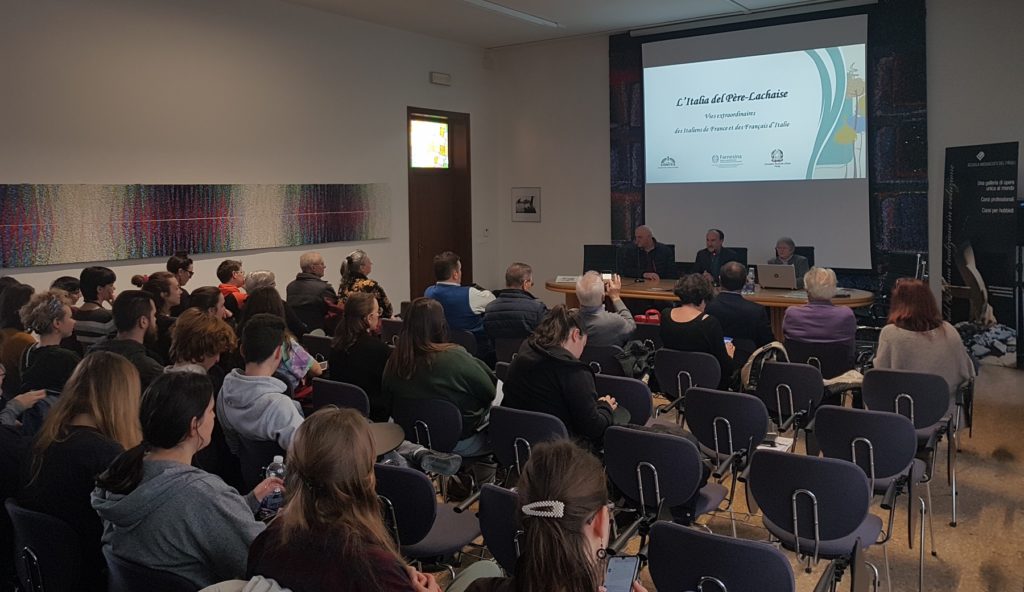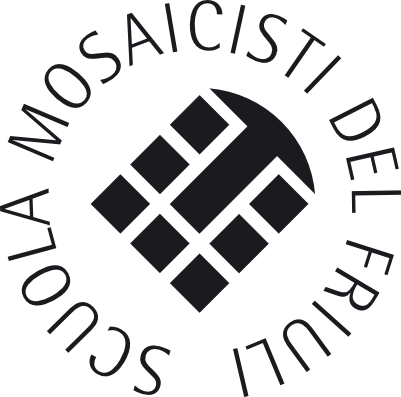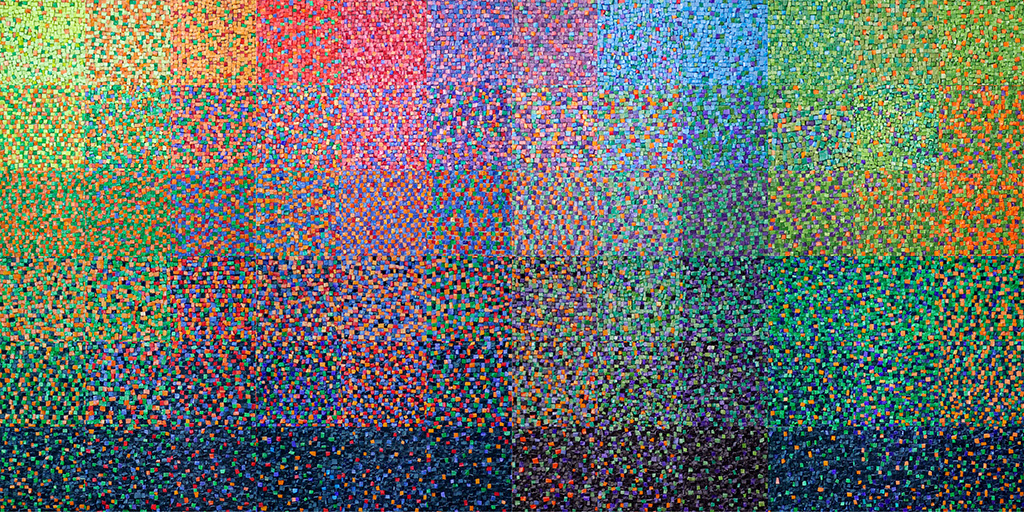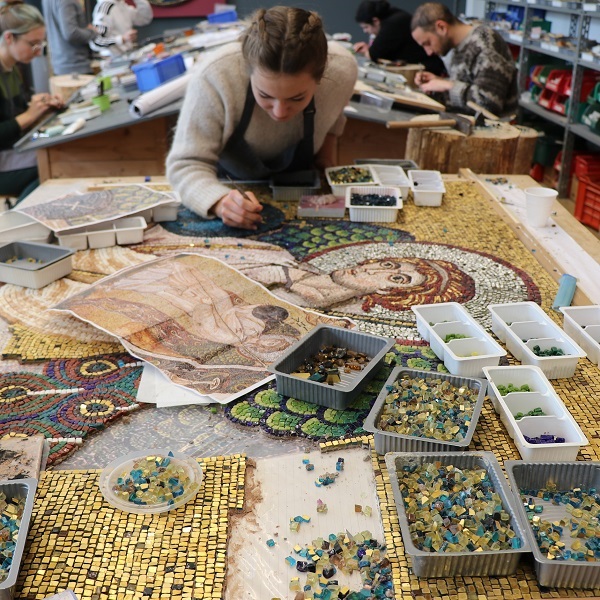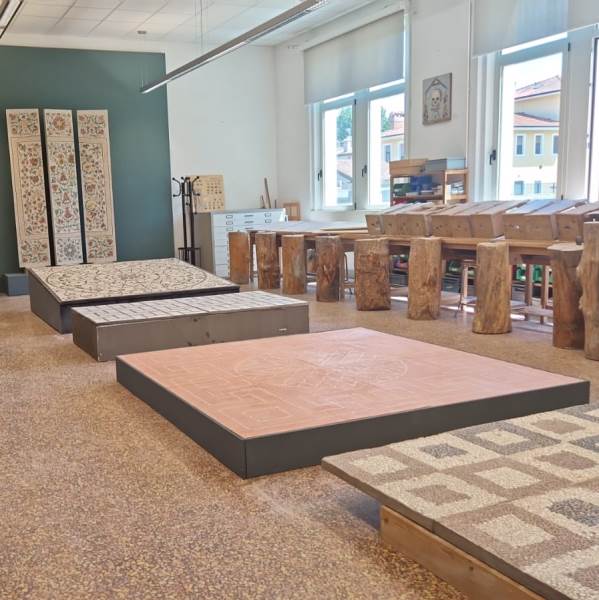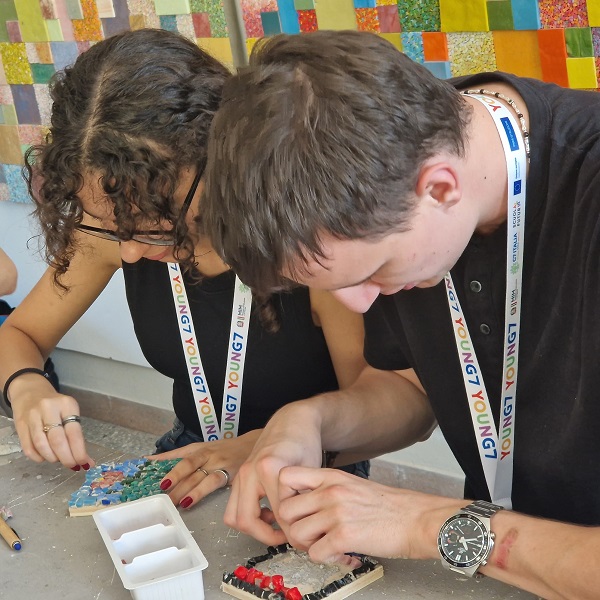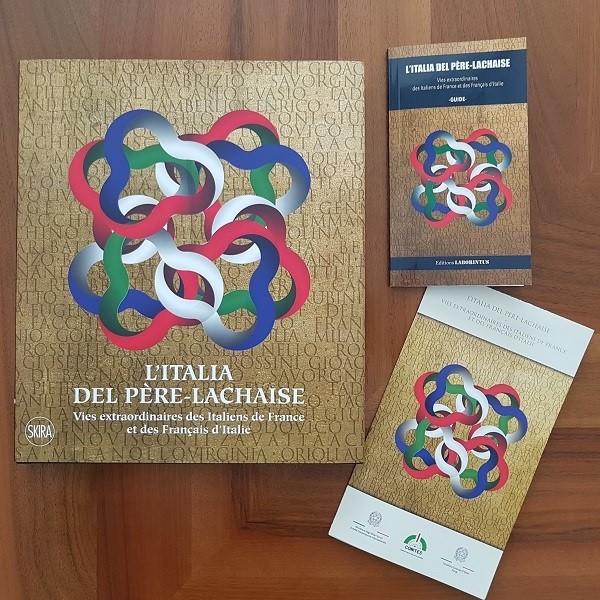
Giandomenico Facchina: an Italian in Père Lachaise
On the morning of Wednesday 19 February 2020 at the Scuola Mosaicisti del Friuli, Patrizia Bisson, councilor of the Comites – Italian Committee abroad in Paris, as well as professor of Italian and researcher, who wrote the biography of three Friulians buried in the monumental cemetery, was a guest by Père Lachaise for the volume L’Italia del Père Lachaise. Vies extraordinaires des Italiens de France et des Français d’Italie, promoted by the Consulate General of Italy in Paris and published by Skira.
The book, with texts in two languages and accompanied by many images, is part of a survey and enhancement project for Italians who have lived in France, making a significant contribution to French culture. In parallel, a map, a pocket guide and an app were also developed, useful tools for moving around the vast cemetery (43 hectares) and identifying the different tombs. Since its establishment in 1804, the Père Lachaise cemetery has welcomed the remains of so many illustrious personalities to be considered a place of European memory, capable of attracting visitors precisely for its artistic and historical aspects.
There are 61 Italians mentioned in the book, some very well known, such as the painter Amedeo Modigliani, the composer Gioachino Rossini, the anti-fascist Rosselli brothers, others more famous abroad than in their birthplace. They are artists, musicians, writers, not to mention women in the world of opera, music and dance. Some have passed through the Parisian cemetery, since later their remains have been moved: of them often remains a cenotaph, as in the case of the composer Vicenzo Bellini, or only memory in the archives. For example, the great explorer Pietro Savorgnan di Brazzà finds a monumental burial in the city of Brazzaville, the capital of that Congo which was once a colony and which he helped found on behalf of France in the last quarter of the Nineteenth century.
The other Friulian whom Patrizia Bisson describes is Antonio Franconi, born in Udine in 1737. Little mentioned in local history, he was the architect of the success of the circus in Paris and his equestrian ability allowed him to introduce the horse in games and stunts.
The third biography proposed is that of Giandomenico Facchina (Sequals, 1826 – Paris, 1903), whose mosaicist activity has been cited and studied on several occasions both by the Scuola Mosaicisti del Friuli and by the Comune di Sequals, as recalled by mayor Enrico Odorico present at the meeting.
Facchina, especially renowned for his decoration at the Paris Opera, knew how to respond to the needs of the clients thanks to the invention of the executive system of the reverse on paper (rovescio su carta). This particular technique, which is still taught in the School today, made it possible to cover large surfaces with mosaic in a short time. The courageous undertaking of the Opera, completed in 1875, gave him fame, making him obtain important orders in other European capitals and overseas. In 1886 he had a knight’s cross from the Legion of honor and an honorary degree from the Central Society of French Architects. He was also able to train and introduce to the French circles many mosaicists and terrazzo workers who emigrated from Friuli.
In the pages dedicated to him ther is a contribution from the Scuola Mosaicisti del Friuli: the book is in fact enriched by interventions by current institutions or personalities that with their reading key give added value to the historical information collected by the authors. In 1922, when the school started its activity, the first mosaic master was Andrea Avon who had worked with Facchina in France. Avon transmitted the reverse technique on paper to his students, a method considered then new and modern and which allowed the School to carry out large orders such as, for example, those of the Foro Italico in Rome or of the dome of the Santo Sepolcro in Jerusalem.

